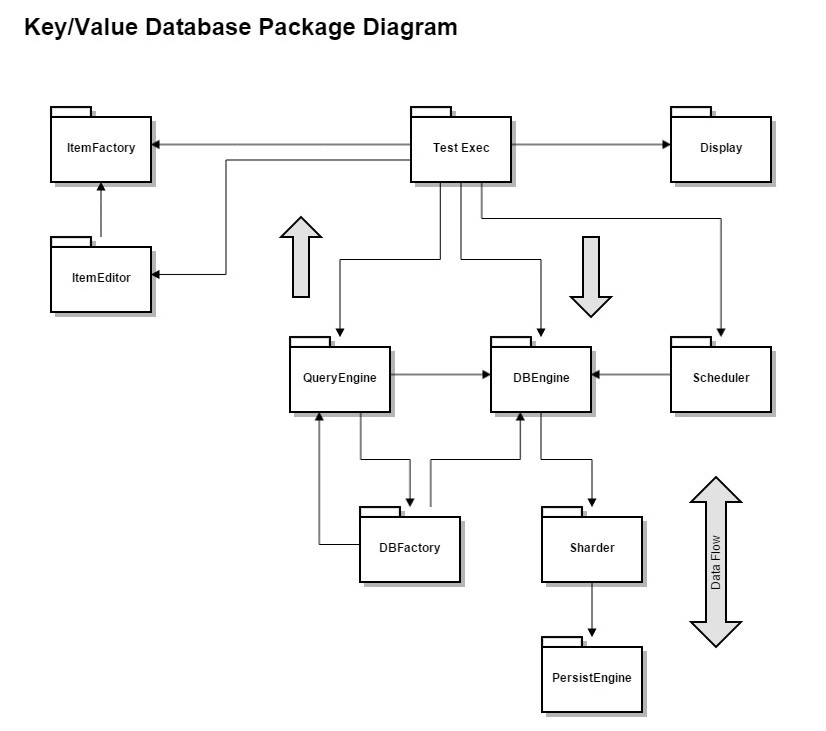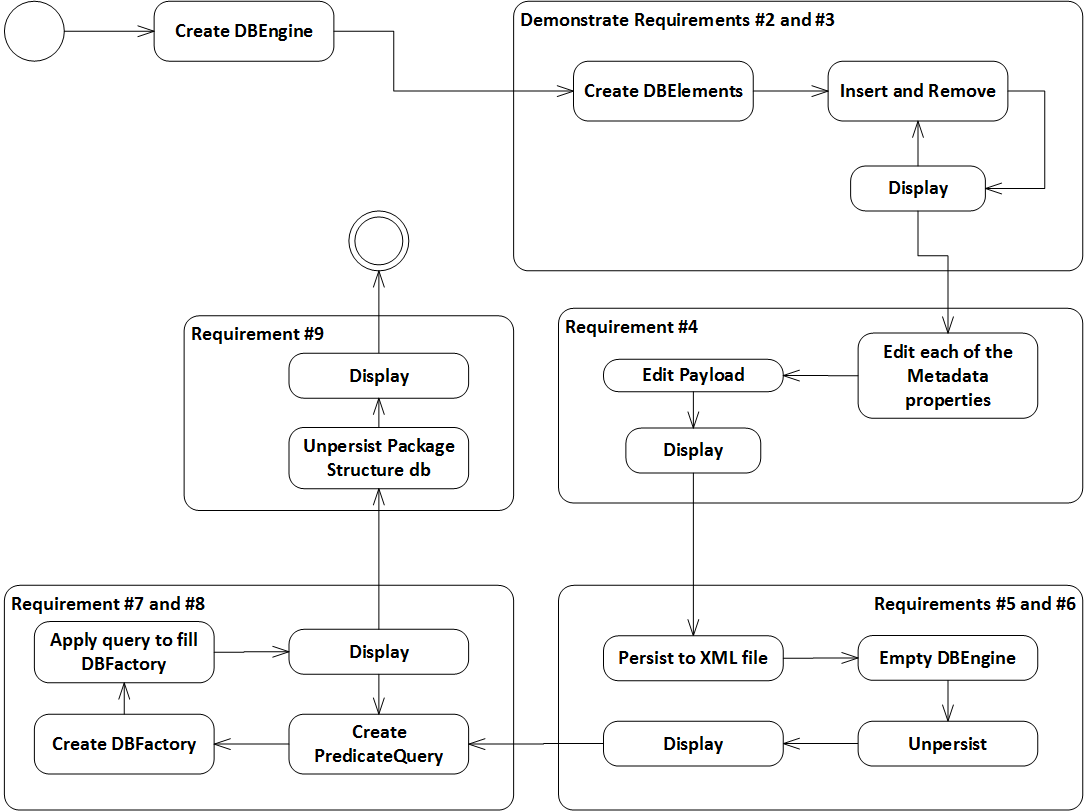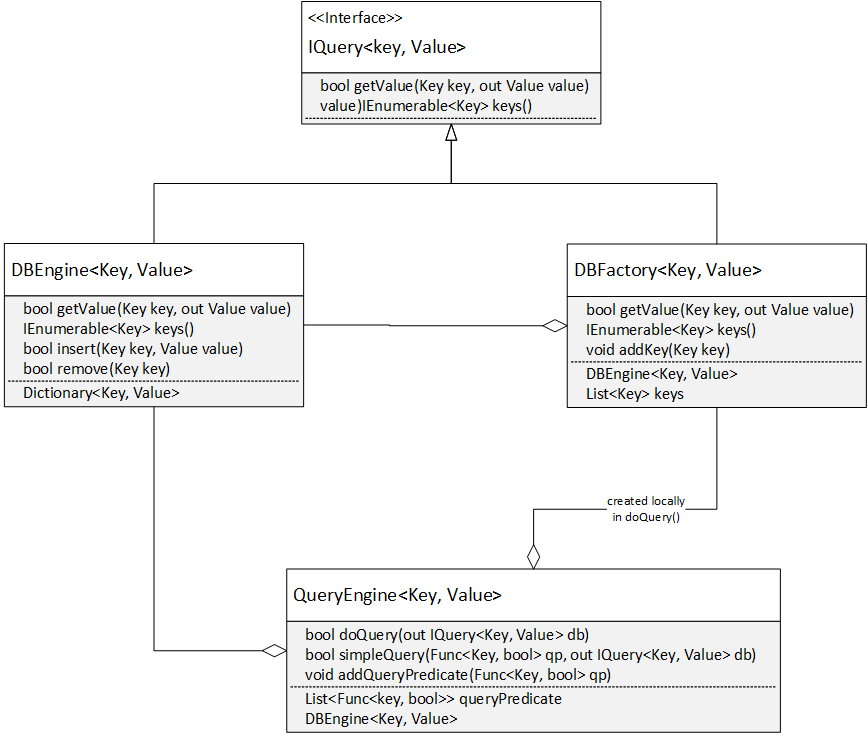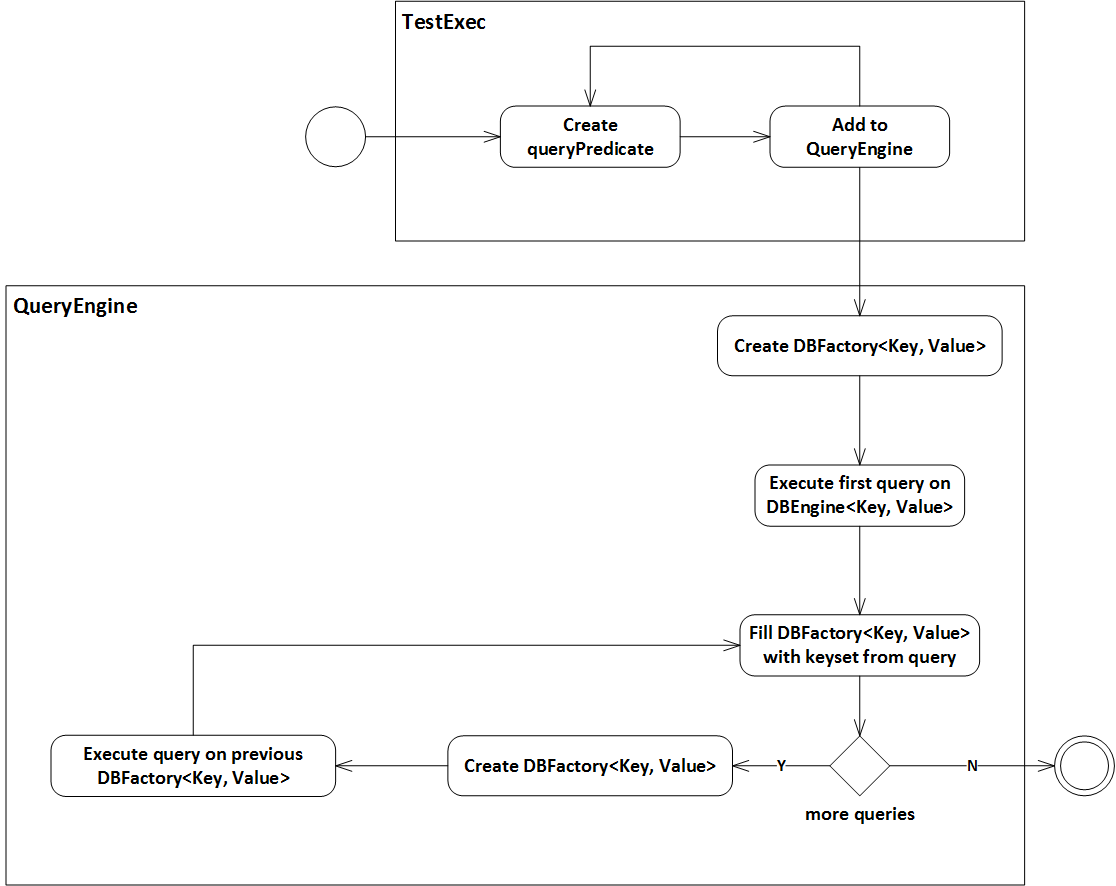Initial Thoughts:
There is currently a lot of technical interest in "Big Data".
Extreme examples are: data collection and analyses from the Large Hadron Collider,
the Sloan Sky Survey, analyses of Biological Genomes,
collecting data for global climate models, and
analyzing client interactions in social networks.
Conventional SQL databases may not be well suited for these kinds of applications. While they have worked very well for many
business applications and record keeping, they get overwhelmed by massive streams of data.
Developers are turning to "noSQL" databases
like MongoDB, CouchDB,
and Redis to handle massive data collection and analyses.
SQL Data Model:
Traditional SQL databases provide a very well understood data management model that supports the ACID properties,
e.g., each transaction is Atomic, leaves managed data in a Consistent state, appears to operate in Isolation from other
transactions that may operate concurrently, and at the end of the transaction the database state is Durable, e.g, is persisted to a permanent
store.
SQL data is normalized into tables with relationships. This matches very well with data models where many records may be associated with the same data.
If we build a books database, for example, many books may be associated with the same publisher information. We link the book information with a foreign key
relationship to publisher information in another table to avoid duplicating the same publisher data in every book record. Many to many relationships are
modeled by linking tables often containing two foreign keys. For the books database a book may have several authors and an author may have published more
than one book. So the link table holds records each of which capture the association of a book with an author. If a book has two authors there are two
records with that book key, one for each author.
Each SQL Table has a fixed schema that captures the type of the records in the table. A record in the books table
might contain the book's name and date of publication.
SQL database designs emphasize data integrity and structuring models in a fixed normalized tabular form.
Queries into the database usually join data from
several tables to build a complete description of the results to be returned.
noSQL Data Models:
The data models used by noSQL databases are usually based on key/value pairs, document stores, or networks. noSQL processing
favors modeling flexibility, the ability to easily scale out across multiple machines, and performance with very large datasets.
For that flexibility they give up real-time data consistency, accepting application enforced eventual consistency. They give up
a formal query mechanism (hence the name). And, they may give up Durability guarantees by only occasionally writing to persistant
storage in order to provide high throughput with large volumes of data.
The choice to use SQL or noSQL
data management is driven by the nature of its uses. Below we discuss Project #5,
an application that builds a data management service for a large collaboration system composed of federated servers. That seems
ideally suited for noSQL data managment.
Goals of a noSQL Implementation:
The noSQL model has goals that often prove to be difficult to implement with SQL databases. A noSQL database is designed to support one or more
of the following:
- Very large collections of data
- High throughput with data from streams
- support tree or graph models for its data
- support heterogenious collections of data
When repeated data isn't a concern, we may avoid the overhead associated with following query references through potentially
many tables and persisting every transaction to a durable store by using a network or key/value reference mechanism in
conjunction with mostly in-memory storage using only occasional writes to the file system. However, when dealing with very large
data models these writes will likely be sharded
into many files for durable storage. Probably a few shards, the most recently used, will be held in memory.
A noSQL model may use a hashtable to store key/value pairs incurring essentially constant time lookup and retrieval of its data, e.g.,
time independent of the size of the data. However, when the size of the managed data requires sharding, the
constant time lookup and retrievel may be compromised by processing necessary to locate shards that contain the data we
need to retrieve. We need to think about things like managing multiple shards in memory using a Least Recently Used
mapping strategy, much like a virtual memory system. We will likely think about using in-memory indexes to keep track of which
shards hold specific data items or categories of items. For some applications it may be appropriate to shard data into time-related
batches, e.g., data collected in a day or a week.
With SQL data management all data is managed the same way. The only flexibility is how we partition the data into tables and
possibly shard data across multiple machines. Changing the schemas and sharding strategy can be quite difficult to implement.
Using noSQL databases we have a lot more flexibility in configuring data and it is easier to change schemas.
The good news is that configuring data, managing schemas, determining when and how to persist to durable storage, and maintaining
consistancy is, with noSQL, up to the application. The bad news is that it is up to the application.
Implementing a noSQL Database:
In CSE681 - Software Modeling & Analysis, Fall 2015, we are exploring the development of a noSQL
database in a series of five projects:
-
Project #1
Develop the concept for a basic noSQL application. We capture the concept with an "Operational Concept Document" (OCD).
-
Project #2
Implement most of the concept and perform thorough functional tests.
-
Project #3
Develop the concept for a remote noSQL application, based on Project #2, using
a message-passing communication service.
-
Project #4
Implement the remote noSQL database server and do performance testing.
-
Project #5
Create and document a data management service architecture using the ideas developed in the first four projects.
This service will provide the communication and state management infrastructure for a large Software Development
Collaboration System composed of a federation of cooperating servers and client controllers.
Our goals are to understand why noSQL databases are interesting and useful, how they could be built, and
to think about the consequences of this approach. The concepts, developed in Projects #1 and #3, are expressed
in Operational Concept Documents that focus on users and uses, top-level application structure, and critical issues.
Documenting critical issues helps us think critically about our ideas and planned implementation before committing
to code. We may find that biasing our design in one direction or another may support the spinning off of new applications
and services from a solid base. We might also find that there are significant impediments on the path we are embarking
and force a rethinking of the application and its goals.
Concept -> Uses:
In the projects for this course, we will be concerned with storing very large data sets, accepting data from streams quickly,
storing and accessing networks of data, and managing collections of heterogeneous data.
In the final project this Fall we will investigate the feasibility of building a data management service for a large collaboration
system. That involves: managing a large repository's data, recording continuous integration and test activities,
managing notifications to a large collection of clients, and building and maintaining templates for test configurations,
collaboration sessions, work package descriptions, etc.
For the first project, however, uses focus on understanding requirements needed to implement a noSQL database, exploring alternative
structures, and demonstrating the implications of our design choices. The users are the developer, Teaching Assistants, and the Instructor.
Essentially each student developer is responsible for demonstrating that each of the requirements in the
Project 2 statement have been met.
The design impact of this use is that the implementation must carefully demonstrate requirements in a step-by-step
fashion. When a requirement asks for the ability to change some aspect of the database state it is the design's responsibility
to show the state before, display the nature of the change, and display the database state after the change. This should be done
trying to make the display as economical as practical so limiting what an observer must understand to verify the action.
Concept -> Structure:
Perhaps the easiest way to begin creating a structure for an application we're developing is to think about the tasks it must
execute. The project statement for Project #2 requires the noSQL prototype to provide the
capability to:
- Create items described by metadata and holding an instance of some generic type.
- Create and Manage a Key/Value database with capability to store and delete Key/Value1 pairs.
- Edit Values
- Persist database contents to an XML file2.
- Augment database contents from an XML file with the same format as persisted, above.
- Support a variety of queries, both simple and compound.
- Support demonstration of all functional requirements through a series of discrete tests with display to the console.
Each database Value has structured meta-data and an instance of the generic Data type. We will choose to create a C# class to represent
Values that might look something like this:
public class Value<Key,Data>
{
// public methods providing
// access to private data
private string name; // Note: you may choose to capture
private DateTime timeStamp; // these Value states as properties
private string description; // rather than private data items.
private List<Key> children;
private Data payload;
}
Here, the payload is what we really want to save in the database. Metadata is just information about the payload
that helps us find what we want with a query.
We will also define a C# class that represents the database engine:
public class noSQLdb<Key,Value>
{
// public methods providing database API
private Dictionary<Key,Value> // The dictionary should not be a public property.
}
Each task in the list at the top of this section is a candidate to become a package. Some we may decide to merge later.
There may also be times to take an existing package and divide into smaller packages. Usually that happens when the
original was becoming too complicated to test easily. Finally there may be a very few packages that we didn't have
the foresight to define in the concept, but discover a need for during implementation.

We start with a TestExec package at the top that is responsible for the project's main use - demonstrating that requirements
have all been met.
TextExec creates instances of Key/Value pairs using a simple factory that may generate a unique key and
construct a Value with supplied parameters.
It uses those pairs to populate its noSQLdb instance through an API provided by
the DBEngine package.
The nature of query processing and sharding are the most interesting parts of this project and will be
left to students to work out in their individual ways.
The remaining parts are self-explanitory after reading the
Project Statement.
When an application is large or becomes complex we often provide a top-level package diagram, like this one,
and later provide more package diagrams for individual parts with significant internal structure.
We almost always provide activity diagrams to help OCD readers understand the intent of the concept.
The OCD for this project would greatly benefit from activity diagrams for handling queries and for
sharding. These are left for students to provide.
Concept -> Critical Issues:
-
Issue: - Demonstrating Requirements
Students only get credit for requirements they clearly demonstrate. No inputs other than a supplied
XML file to load the intial database are required3. The only output required is a console display.
Solution:
This requires careful orchestration of a series of tests invoked by the test executive and supported by processing
in the Display package.
Impact on Design:
It will be effective
to provide a method for each test that announces the Requirement number and displays db state before and after
each change.
-
Issue: - Designing Queries
Statement and solution(s) are left to the students.
-
Issue: - Sharding
Statement and solution(s) are left to the students.
-
More Issues: - Left to Students.
Later Projects:
After completing Project #2 we work on a concept, in Project #3, and implement, in
Project #4 remote access to the noSQL prototype via message-passing communication.
Finally we develop an architecture, in Project #5, for a data management service
in a large Software Development Collaboration Environment using the NoSQL model we created in the earlier projects.
You will find that several noSQL databases are required for Project #5 and that the key types and value types will not all be the same. I would
expect that sharding strategies may vary from database to database. For that reason, it would be interesting to support
pluggable sharding strategies in our noSQL design. You should probably address that as a critical issue in your OCD for
Project #14.
Concept Revisited:
All the discussion that follows was added after students turned in their noSQL Operational Concept Documents. This discussion is concerned
with things I wanted students to think about without being given too much guidance, but now want to clarify before they begin their designs for
the noSQL Database. We will focus on meeting Requirements, Queries, Sharding, and say a couple of things about the ItemFactory. To understand the details
discussed here you will find it helpful to look again at the Project #2 starter code discussed
in class.
Top Level Activities:
In Project #5 our architectue describes data services for a federation of servers designed to support collaboration activities in a software development environment.
In Project #2, we're providing the noSQL database to support those services.

Top Level Activity Diagram
But for Project #2 all activities focus on demonstrating requirements. To do this we:
-
Demonstrate creation of each of the required parts, DBEngine<Key, Value>, DBElement<Key, Data>
-
Demonstrate adding, removing, and editing DBElements<Key, Value> while contained in the database.
-
Each time we make a required change in the database's state we are obligated to show the state before
the change, the changed DBElement, and the state of the database after the change.
-
Write the database contents to an XML file, clear the database contents, add a new element or two,
then read the XML and agument the existing database contents from the XML files contents.
-
Clear the database contents and load the database from and XML file describing your project's structure.
In the help session on Friday Morning, 9/18/2015 we started the construction of a TestExec that implements
these activities. You will find that code here:
Project2HelpF15
in the Project2Starter folder.
Queries:
First, what is a query for this nonSQL database? Let's define that in parts:
-
A QueryPredicate is a function that accepts a db key and returns true or false depending upon the processing of the
predicate function. For this noSQL db, the processing will look for specific conditions in the element bound to the supplied key,
e.g., name, description, time-date stamp, children, or payload. We will use C# lambdas to implement QueryPredicates. See
LambdaDemo for code that is close to what we need here.
-
A simple query then, consists of applying the QueryPredicate to each of the keys in the database and collecting all of the
keys for which the predicate is true. That's what DBFactory<Key, Value> does.
-
A compound query is a chain of queries, each query using the keyset returned by the previous query5. We'll need some
way to manage those returned keysets - QueryEngine manages that process, using DBFactory<Key, Value>s to wrap return keysets.
At each step QueryEngine constructs a DBFactory<Key, Value> instance, applies its next QueryPredicate to that instance, to
get the next keyset.

Query Processing Class Diagram
So, QueryEngine wraps each query return in an object that holds the resulting keyset and has the same reading interface (keys(), getValue(key, out val))
as the DBEngine but doesn't have any writing methods. That's DBFactory<Key, Value>.
Suppose that we define a C# interface, IQuery, that declares
those "reading" methods and have both DBFactory and DBEngine implement that interface.
Then to make a query the query engine applies a QueryPredicate to DBEngine<Key, Value>, creates a DBFactory<Key, Value>
passing to its constructor the ketset returned by the query.
If the query is compound this process is repeaded using the DBFactory
at each successive step. Thus the keyset gets refined at each step of the compound query. Essentially the DBFactory is just a
container of keys that link back to the DBEngine through a reference held by the DBFactory.
With that setup we can define the simpleQuery method to use the IQuery interface so it can be applied at each step of the query, e.g.,
to either DBEngine<Key, Value> or to DBFactory<Key, value>.

Query Processing Activity Diagram
QueryEngine is configured with a set of QueryPredicates. It uses the first on DBEngine<Key, Value> to get a DBFactory<Key, Value>
typed as an IQuery<Key, Value> with the first keyset, and uses each
successive query on the returned DBFactory<Key, Value> to refine the keyset returned by the previous query. You will find
the PredicateLambda project in LambdaDemo to contain code that is close to
what you need for Project #2.
You can think of the QueryPredicates to be equivalent to stored procedures in a conventional database.
Sharding:
Sharding is the process of writing out part of the contents of the noSQL Database to files - we'll use XML processing to do that.
So how do we decide what part to write out for each shard? Here, the designer has to understand the data she's working with.
In Project #5 we're building a data management service for a federation of
servers that implement a Software Development Collaboration Facility. One of those servers is a Software Repository. We'll use
a noSQL database to manage files in terms of their dependencies, e.g., which packages depend on which others. So each element
of the database represents a package. The parent - child relationships supported by a noSQL database are just what we need to
represent dependencies between packages. Here, we'll probably use the package name as the key
for each element of the database.
So, we'll shard that database by subsystem. All the packages in one subsystem are described by one shard. Note that we don't save
the packages in the database. We just save their locations and dependencies. The file system does a beautiful job of holding onto
the physical files.
Similarly, another server is a test harness. It generates perhaps hundreds of test events per second, e.g., which test is executing,
did it pass or fail, ... For this we'll probably shard based on time, e.g., all the messages that occurred today.
Sharding Critical Issues:
There are two obvious critical issues for sharding:
-
How to select the contents of individual shards. The only likely solution is to know your data (see the comments above).
-
How to efficiently query information distributed across shards as well as what's in memory. One solution for that is to use another
noSQL database to manage sharding. If each element of that database represents a shard, then we can describe the shard
with the descriptor, and supply more details in the payload. So a query into the shards uses the shard manager db to find
the appropriate, hopefully small number of, shards to load into memory and query.
ItemFactory:
The starter code uses a DBElement<Key, Data> to ensure that all the code that uses the noSQL database have elements that
are structured in the same way. ItemFactory is intended to support the creation of database elements where there are many very
similar instances to create. Logging for the TestHarness in Project #5
is an example. There, the items will have identical, or nearly identical descriptors, have auto-generated names, and probably
have text payloads. The ItemFactory could use XML templates to configure items for these special situations so that client code
won't have to provide that functionality. It should use DBElement<Key, Data> for all the heavy lifting.
The ItemEditor is responsible for supporting revisions to any part of a DBElement<Key, Value>, e.g., name, descriptor, time-date
stamp, child relationships, and payload. It too should use DBElement<Key, Data> to manage the all the element parts, and just
provide the functionality for change. Most of this is quite straight-forward, but there is one interesting issue: how to support
editing the payload when we don't know anything about its structure. For that we could make the ItemEditor class generic on the
payload Data type and ask the user to supply editing facilities for that. How to do that is an interesting question to think about.
A few of the ideas discussed here are prototyped in:
-
Project #2 starter code
Provides starter code for DBEngine<Key, Value>, DBElement<Key, Data>, and associated display code. After
the help session, Friday 9/18/2015, it also contains a TestExec that begins to demonstrate requirements.
-
LambdaDemo
Contains three projects that dig into delegate-lambda relationships and of particular value
a project named PredicateLambda which provides starter code for the QueryEngine
and DBFactory<Key, Value>.
Obviously there is still a lot of design and implementation left for you to enjoy before October 7th.
For those of you without a lot of software development experience, you should note that:
- There is no requirement for sharding. You just have to write the db contents to and from an XML file.
-
There is no requirement for compound queries. If you don't make compound queries then QueryEngine<Key, Value> just needs
one queryPredicate for a query and you don't need to build the DBFactory<Key, Value>, you just do its processing one time
in QueryEngine<Key, Value>.doQuery().
-
You won't penalized for ommitting features you discussed in the concept but were not required by the
Project #2 statement.
-
Your code must have a well-thought out structure and use well-formed packages, but it doesn't need to
look just like the concepts discussed here.





